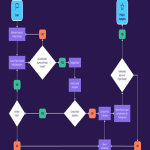The gavel has fallen. With the Canadian Sustainability Standards Board (CSSB) officially adopting the IFRS S1 and S2 standards, mandatory ESG reporting is no longer a future consideration - it’s a present-day reality for Canada’s energy and mining sectors. While much of the focus has been on the operational lift required to collect and report this data, a far more critical risk lurks for leadership: a fundamental shift in Directors and Officers (D&O) liability.
For decades, D&O policies have primarily protected against financial misrepresentation. Today, they must guard against allegations of "greenwashing" or misstating environmental and social performance. Your board’s personal risk exposure has just increased dramatically.
The New Litigation Landscape
Shareholders and stakeholders now have a standardized, auditable framework to hold companies accountable. A misstep in your ESG disclosures isn’t just a reputational issue; it’s a legal one. Potential pitfalls include:
Overstating Ambition: Claiming leadership in carbon capture utilization and storage (CCUS) without demonstrable, viable projects or capital allocation.
Understating Risk: Failing to adequately disclose the financial risks associated with stranded assets or climate-related transition plans.
Data Integrity Gaps: Basing disclosures on flawed or un-auditable data regarding emissions, Indigenous community engagement, or biodiversity impacts.
A 5-Step Checklist for Board Governance
To mitigate this risk and turn compliance into a competitive advantage, your board must act now.
Governance Gap Analysis: formally map board and committee responsibilities against the new CSSB standards. Who oversees data integrity? Who verifies the connection between ESG metrics and financial performance?
D&O Policy Review: Engage your broker to conduct a clause-by-clause review of your D&O policy. Does it explicitly cover investigations and litigation related to ESG disclosures? Many legacy policies do not.
Data Assurance Protocol: Treat ESG data with the same rigor as financial data. Implement controls and internal audit procedures long before the external auditor arrives.
Scenario Planning: Stress-test your transition plans and disclosures against multiple future scenarios (e.g., rapid decarbonization, new policy shocks). Can your claims withstand scrutiny under different outcomes?
Continuous Education: Ensure the entire board is fluent in the new standards and their implications for corporate strategy and risk.
The companies that approach this as a strategic governance imperative will not only protect their leaders but will also build unmatched credibility with investors and communities. Those who treat it as a mere compliance exercise are rolling the dice with their directors’ futures.
Summit Crest Global provides strategic advisory and risk governance to energy and mining boards navigating the energy transition. Contact us to conduct a full review of your ESG governance readiness.



